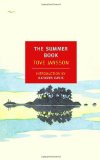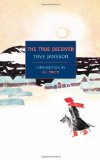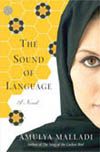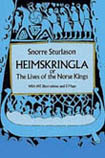Scandinavian Novels: The Classics
Knut Hamsun Books
Knut Hamsun (1859-1952) wrote over 40 books, several of which are considered classics. He was also one of the most important and conroversial writers of the 20th century, and he remains one of Norway’s most widely translated fiction-writers.
Hamsun’s works center on the author’s value of the simple and unsophisticated, and on his belief that man’s only fulfillment lies with a relationship to the soil — a belief that led to a distrust of all things modern, and even to a dislike of civilization itself. His early works, such as Hunger (Sult), often had a vagabond/outcast opposed to civilization as the main character. Hunger, an autobiographical novel published in 1890, marked Hamsun’s literary breakthrough as well as the emergence of Neo-romanticism in Norway.
This “primitivism” theme and Hamsun’s distrust of all things modern found its fullest expression in The Growth of the Soil (Markens Grøde), his masterpiece for which he received the Nobel Prize in 1920. A grand, sweeping saga of sacrifice and struggle, this epic tale recaptures the world of Norwegian homesteaders at the turn of the 20th century. Isak and Inger, an idealistic young couple, reject modern society to raise their family on a backcountry farm.
Today, Hamsun’s books are found in academic settings as well as in personal libraries, and several of his works are required reading in world lit courses in universities worldwide.
We have quite a collection of Knut Hamsun books for sale. If you are looking for a certain book please e-mail us at: questions@ruralroutebookstore.com.
Tove Jannson’s Novels
Jansson worked in many creative media, but the Finnish-born, Swedish-speaking woman is world-famous for writing the series of Moomin stories for children. Often thought of as a writer of children’s stories (of which there many including collections and picture books), Jansson — who grew up in a very artistic and literary family — wrote 11 books for adults. In addition, she was a painter, mural painter, illustrator, and comic strip author. Tove Jansson received many awards and medals for both her works and her contributions. Born in 1914, she wrote and published multiple books each year throughout her adult life. She died in 2001. It has been written that Jansson’s stories, including those in her children’s books, always had a deeper meaning for readers of all ages to discover.
Thomas Teal has excellently translated the following two books from Swedish. Sommarboken, The Summer Book, was written in Swedish and published in 1972; Den ärliga bedragaren, The True Deceiver, was written and published in 1982.
Contemporary Scandinavian Novels
Linda Olsson Books
Linda Olsson is Swedish by birth, has lived in many countries, and now resides in New Zealand. Olsson has written two novels in the past two years. Within a few months of the release of her first novel, Astrid and Veronika, she was thrust into the international literary scene. Her second novel, Sonata for Miriam, received the same worldwide acclaim and has now been nominated for the prestigious IMPAC Dublin Award.
Both books celebrate her homeland of Sweden, and she has quickly become known for her “gorgeous prose” and her extraordinary understanding of human relationships.
Scandinavian Plays
Henrik Ibsen’s Plays
In the entire history of literature, there are few figures like Henrik Ibsen (1828-1906). Practically his whole life was devoted to the theater, and his offerings have changed the history of the stage.
A major 19th century Norwegian playwright, theatre director, and poet, Ibsen has been called “the father of prose drama,” and a founder of Modernism. He moved away from the Romantic style, and brought the social problems and ideas of that era onto the stage. Themes he focused on were societal breakdown, stereotyping, class struggles, and morality. His later works were centered on deep psychological questioning. However, people in Norway did not welcome this thematic shift, and considered some of his works scandalous. Ibsen’s works met with better approval in other countries, and today he remains among the most popular, studied, and produced playwrights ever.
Six of his plays are available from Rural Route Bookstore: A Doll’s House, An Enemy of the People, Ghosts, Hedda Gabler, Peer Gynt, and The Wild Duck. (These are unabridged versions, and may be used in the U.S. — in entirety or in adaptations — for theatrical purposes without fee, permission, or acknowledgment. Copyright conditions may differ in other countries.)
August Strindberg’s Plays
August Strindbeg (1849 – 1912) vies with Henrik Ibsen for the title of Scandinavia’s foremost playwright, yet the two are very different. In the shift to Modernism, Ibsen was a Realist debating problems with a clear, logical mind. Opposite him, Strindberg said about himself: “I am not a Realist. I write best when I hallucinate.” While both authors became immediately popular internationally, one thing the two shared was hostility from home country audiences at the time their works were released. Similar to Ibsen’s, Strindberg’s works remain popular today and continue to be performed worldwide.
Considered the “father of modern Swedish literature,” Strindberg – a sensitive person and a controversial writer – was a Swedish playwright, novelist, painter, short-story writer and essayist. A prolific writer who usually drew upon personal experiences, his career spanned four decades. He wrote over 60 plays and more than 30 works of fiction, autobiograpy, history, cultural analysis, and political works. Along with self-analysis, his themes combined psychology, naturalism, and literary experimentation
Two of his plays are available from Rural Route Bookstore: Miss Julie and The Father. (These are unabridged versions, and may be used in the U.S. – in entirety or in adaptations – for theatrical purposes without fee, permission, or acknowledgement. Copyright conditions may differ in other countries.)
Scandinavian Sagas and Eddas
The Eddas
Like most early poetry, the Eddic poems were minstrel poems, passed orally from singer to singer, from skald to skald, and from poet to poet for centuries. These Eddas strongly influenced later day writers and musicians such as J.R.R. Tolkien and Richard Wagner.
The Poetic Edda, a collection of poems in the Old Norse/Icelandic language, is from traditional sources, and thought to have been compiled around the 13th century, the same time as The Prose Edda. None of the poems in The Poetic Edda are attributed to a particular author. The poems are likely the work of individual skalds, and — despite much research and debates — the author is always listed as Anonymous.













